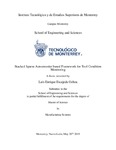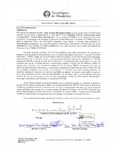| dc.contributor.advisor | Morales Menéndez, Rubén | |
| dc.creator | Escajeda Ochoa, Luis Enrique | |
| dc.date.accessioned | 2019-08-29T23:40:16Z | |
| dc.date.available | 2019-08-29T23:40:16Z | |
| dc.date.created | 2018 | |
| dc.identifier.citation | Escajeda-Ochoa, L. E. (2019). Stacked Sparse Autoencoder base Framework for Tool Condition Monitoring (Master's thesis). Instituto Tecnológico y de Estudios Superiores de Monterrey, Monterrey, Nuevo León, México. | es_MX |
| dc.identifier.uri | http://hdl.handle.net/11285/633053 | |
| dc.description.abstract | Tool condition monitoring systems in High Speed Machining (HSM) are of great importance
to maintain the quality of the products and diagnose the useful life of the tools. These systems are
highly demanded for the suppliers of molds and dies in the aeronautic and automotive industry.
Tool wear is a real problem for the industry, around 20% of the down-time is attributed to
tool failure, resulting in reduced productivity and economic losses also, there seem to be numerous
factors that can affect the surface roughness. Controllable process parameters include; feed, cutting
speed, tool geometry and setup; but, there are other factors which are harder to control include
machine vibrations, work piece and specially tool wear degradation.
The complexity of the Tool Wear Monitoring (TWM) has led to a significant amount of literature
related to this problem, various techniques have been proposed; but, TWM remains a real and
complex problem to solve owing to its constant change in the process variables. Literature shows
that the signal processing techniques are the most used for feature extraction. Extracting valuable
features from raw data using signal processing techniques alone in most of the cases is not sufficient
due to some of the important features are hidden in abstract features, which are not easy to access.
For this task Deep Learning (DL) has the most notable advantage of a powerful complex learning
ability. SSAE are a powerful classification tool of DL, the non-supervised training algorithm is a
good option to extract very representative features of the signals.
A new methodology based in SSAE is presented. Two approaches are taking on account, the
first uses time domain signals as inputs, the second one is a hybrid methodology, the input sig-
nals are pre-processed to obtain the Mel-Frecuency Cepstral Coefficients (MFCC) and use them
as inputs for the Stacked sparse AutoEncoder (SSAE) neural network. The methodology evalu-
ates different signals obtained from different sensors (accelerometer, dynamometer and acoustic
emission), which were recorded during the machining of aluminum workpieces, with different
hardness, tools and cutting trajectories. The methodology presents a fairly acceptable performance
(99.8%) in the prediction of the tool wear condition, especially with the signals of the acoustic
emission. SSAE neural network outperforms traditional neural network. | es_MX |
| dc.format.medium | Texto | es_MX |
| dc.publisher | Instituto Tecnológico y de Estudios Superiores de Monterrey | esp |
| dc.relation.isFormatOf | versión publicada | es_MX |
| dc.rights | Open Access | es_MX |
| dc.rights.uri | http://creativecommons.org/licenses/by-sa/4.0/ | * |
| dc.subject | INGENIERÍA Y TECNOLOGÍA::CIENCIAS TECNOLÓGICAS::TECNOLOGÍA INDUSTRIAL | es_MX |
| dc.subject.lcsh | Ingeniería y Ciencias Aplicadas / Engineering & Applied Sciences | es_MX |
| dc.title | Stacked sparse autoencoder base frameworks for tool condition monitoring | es_MX |
| dc.type | Tesis de Maestría / master Thesis | es_MX |
| dc.contributor.committeemember | Vargas-Martínez, Adriana | |
| dc.contributor.committeemember | Lozoya Santos, Jorge de Jesús | |
| dc.contributor.mentor | Vallejo Guevara, Antonio Jr. | |
| dc.publisher.institution | Instituto Tecnológico y de Estudios Superiores de Monterrey | es_MX |
| dc.subject.keyword | High speed machining | es_MX |
| dc.subject.keyword | Autoencoder | es_MX |
| dc.subject.keyword | Feature extraction | es_MX |
| dc.subject.keyword | Machine learning | es_MX |
| dc.subject.keyword | Tool wear detection | es_MX |
| dc.contributor.institution | School of Engineering and Sciences | es_MX |
| dc.contributor.institution | School of Engineering and Sciences | es_MX |
| dc.contributor.institution | Campus Monterrey | es_MX |
| dc.description.degree | Master of Science in Manufacturing Systems | es_MX |
| dc.audience.educationlevel | Estudiantes/Students | es_MX |
| dc.relation.impreso | 2019-05-20 | |


